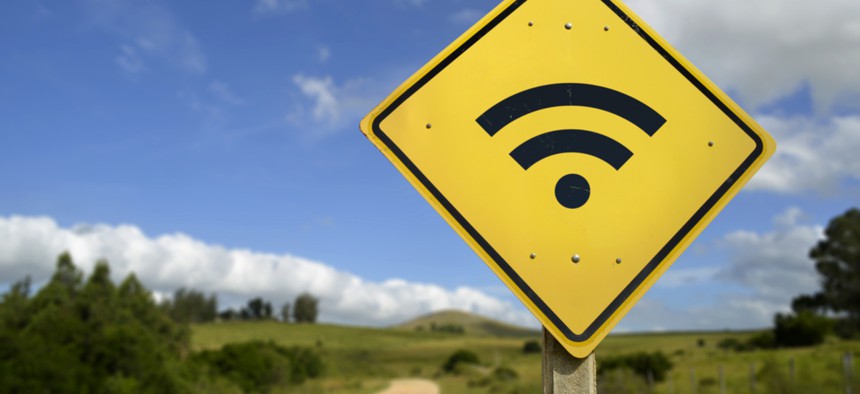Microsoft Is On Its Way to Bringing Internet to 3 Million People in Rural America by 2022

Cienpies Design/Shutterstock.com
The software company is expanding its work into 10 more U.S. states.
In mid-2017, Microsoft announced it was launching the Airband Initiative, an effort to connect 2 million people in rural America to the internet with broadband-like speeds by 2022. The company seems to have exceeded its own expectations, as it’s announcing Tuesday that it’s already connected 1 million people, and is upping its target to 3 million in the same timeframe.
Microsoft has been working with local internet providers in a handful of U.S. states to conceive of novel ways to connect residents to the internet in places that larger companies deemed too expensive to service. For one community in northern Michigan, that meant connecting a local provider, Packerland Broadband, with companies that manufacture radio equipment that can broadcast data over spaces between TV signals, referred to as TV whitespace. Microsoft was able to make connections and introductions that the small provider likely wouldn’t have had access to on its own.
The software company is expanding its work into 10 more U.S. states, including Indiana, Mississippi, Oklahoma, West Virginia, and California. It wants to address the roughly 24 million Americans who are without broadband internet, according to the Federal Communications Commission, and are being left behind as life, education, insurance and government move increasingly online. (Microsoft is also keenly aware that all those people coming online might end up becoming new customers.)
Microsoft also wants to work with the FCC to better identify who has access to the internet. Although the current number is surprisingly high for the world’s largest economy, it may be even higher, based on the way the FCC maps internet usage. For example, in one surveying area, if one person (which might be a business) has broadband access, then that area is listed as having access, even if there’s no commercial service available. Even FCC commissioners don’t think existing maps—updated this year—of their own homes are accurate.
Theoretically, Microsoft has the ability to fix this: for every Skype call, each Bing search, every Windows or Xbox update, its servers need to know how strong a connection the person on the other end has to effectively deliver data to them. It’s looking into using that data (anonymized, of course) to paint a more accurate picture of internet access in the U.S. Microsoft president Brad Smith will announce at an event in Washington DC today that the company is building an analytics team to do just that.





